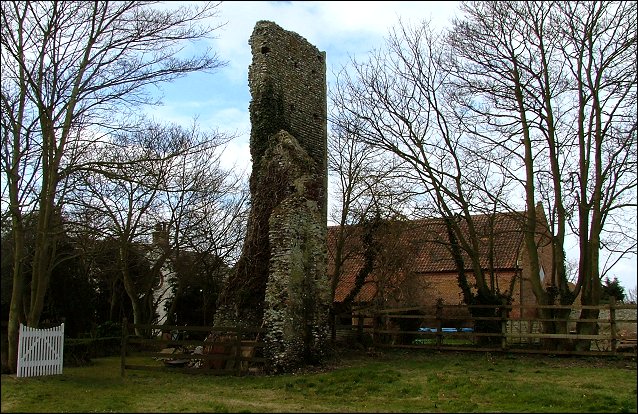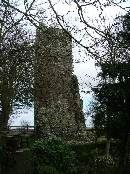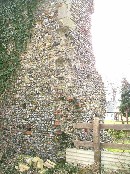
home I index I latest I glossary I introductions I e-mail I about this site
St
Edmund, West Caister
old church

Read
the captions by hovering over the images, and click on them to
see them enlarged.



St
Edmund, West Caister (old church)
To an extent, the damage has been done. The stone dressings in the bottom north-west corner of the tower have fallen away, and it won't be long before the freeze-thaw action of successive winters causes the collapse of the rest. It isn't clear to me when the dereliction here happened - was the old church still in use until the Victorians built the new one to replace its decaying form? Or was it a much older abandonment, and the new church evidence of the 19th century Anglican revival? There are certainly no old gravestones around to suggest a date. However, the tower must have been pretty well complete until the end of the 19th century, because West Caister is the site of the 'maiden's tomb' legend, a popular East Anglian folk story. This referred to the pyramidical top of the tower, actually a fairly common 17th century decorative device, which was said by locals to be the final resting place of a certain young woman. She had promised herself in marriage, against her parents' wishes, to a sailor; but she died while he was at sea. They agreed to her last wish, to buried in such a place that he might see it from the sea. Nonsense, of course, but romantic all the same. Simon Knott, April 2006 |
home I index I latest I glossary I introductions I e-mail I about this site